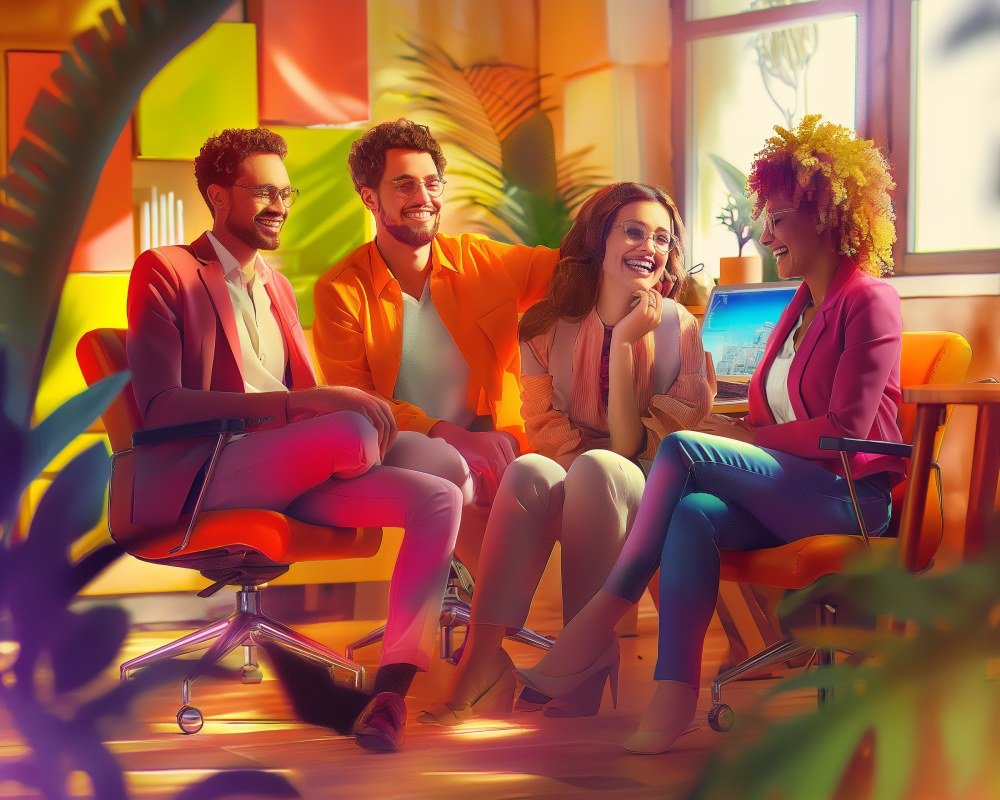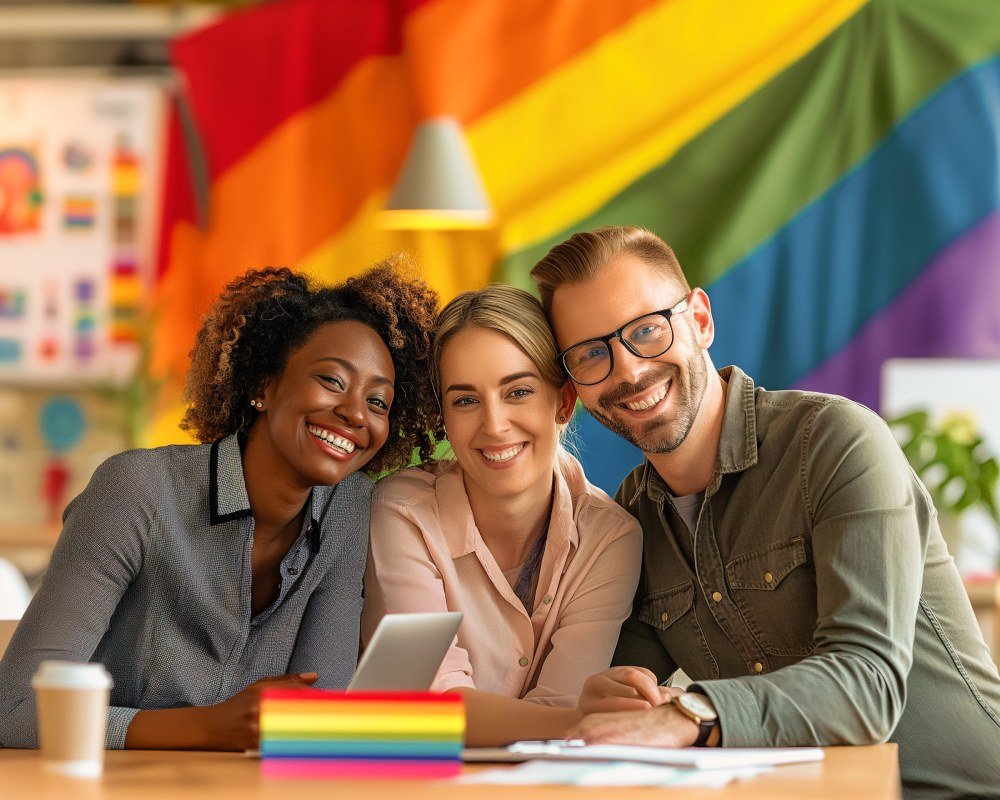
What Are the Most Common Myths About Gays? – The LGBTQ+ community has long been the target of misinformation and myths, and the gay community is no exception. In this blog, we will explore some of the most common myths about gays and debunk them with facts and evidence. It’s important to address these myths head-on, as they can perpetuate harmful stereotypes and misunderstandings about gay individuals. By shedding light on the truth behind these misconceptions, we can promote understanding, acceptance, and inclusivity within our society.
Myth 1: All Gays are Promiscuous
One common myth about gays is that they are all promiscuous individuals who engage in numerous sexual encounters.
Contrary to popular belief, not all gay individuals are promiscuous. Just like straight people, the level of promiscuity varies among gay individuals. Some may choose to engage in casual encounters, while others may prefer committed relationships. It is important to recognize that sexual behavior does not define a person’s worth or character.
While it is true that the LGBTQ+ community faces unique challenges when it comes to navigating relationships and intimacy, it is essential to remember that promiscuity is not a universal trait among gay individuals. Like anyone else, gay individuals have diverse preferences and desires when it comes to relationships and sexuality.

Myth 2: Gays are More Likely to Have Mental Health Issues
Another myth about gays is that they are more likely to have mental health issues compared to their heterosexual counterparts.
This myth is rooted in outdated stereotypes and stigmas surrounding homosexuality. While it is true that LGBTQ+ individuals may face higher rates of mental health issues such as depression and anxiety, these challenges are often a result of societal discrimination and prejudice, rather than inherent characteristics of being gay.
Research has shown that the stigma and discrimination faced by LGBTQ+ individuals can have a negative impact on their mental health and well-being. By addressing the root causes of mental health disparities, such as discrimination and lack of acceptance, we can create a more inclusive and supportive environment for gay individuals to thrive.
Advertisement · Scroll to continue
Recommended
Myth 3: Gays Cannot Have Long-Term, Monogamous Relationships
One pervasive myth about gays is that they are incapable of having long-term, monogamous relationships.
This myth stems from the misconception that gay relationships are inherently less stable and committed than heterosexual relationships. In reality, many gay couples have thriving, long-term relationships that are just as loving and committed as any other.
Research has shown that the quality of a relationship is not determined by the sexual orientation of the individuals involved. Just like straight couples, gay couples can build strong foundations of trust, love, and commitment that sustain their relationships over time. By challenging this myth and celebrating the diversity of relationship styles within the LGBTQ+ community, we can promote acceptance and understanding.

Myth 4: All Gays are Effeminate and Flamboyant
Another common myth about gays is that they are all effeminate and flamboyant in their mannerisms and appearance.
This stereotype is harmful as it reduces gay individuals to a narrow and inaccurate portrayal of their identities. In reality, the LGBTQ+ community is diverse and encompasses individuals of all gender expressions and presentations.
Not all gay individuals fit the stereotype of being effeminate or flamboyant. Just as straight people vary in their expressions of gender and identity, gay individuals also have a wide range of presentations and personalities. It is important to recognize and celebrate the diversity within the LGBTQ+ community, rather than perpetuate harmful stereotypes.
Myth 5: Gays are More Likely to Abuse Drugs and Alcohol
There is a myth that gays are more likely to abuse drugs and alcohol compared to their heterosexual counterparts.
This myth is often used to stigmatize and marginalize the LGBTQ+ community, reinforcing harmful stereotypes about gay individuals. While it is true that LGBTQ+ individuals may face unique challenges when it comes to substance abuse, such as coping with discrimination and social stigma, it is essential to recognize that substance abuse is not exclusive to the gay community.
By addressing the underlying factors that contribute to substance abuse, such as social isolation and lack of support, we can create a more understanding and inclusive environment for LGBTQ+ individuals to seek help and support. It is important to challenge stereotypes and myths that perpetuate harmful narratives about gay individuals, and instead promote empathy, acceptance, and support within our communities.

Advertisement · Scroll to continue
Recommended
Myth 6: Gays Recruit Children

One of the most damaging myths about gays is the belief that they recruit children into homosexuality.
This myth is not only false but also harmful, as it perpetuates harmful stereotypes and prejudices about gay individuals. LGBTQ+ individuals do not recruit or influence children to become gay. Sexual orientation is not a choice, and it is important to recognize and respect the diversity of identities within the LGBTQ+ community.
By debunking this myth and promoting accurate information about sexual orientation and identity, we can create a more inclusive and accepting society for all individuals, regardless of their sexual orientation. It is important to challenge harmful myths and stereotypes that perpetuate discrimination and prejudice, and instead foster understanding and acceptance within our communities.
Conclusion
In conclusion, it is essential to challenge the myths and misconceptions that surround the gay community. By debunking these myths with facts and evidence, we can promote understanding, acceptance, and inclusivity within our society. It is important to recognize the diversity and complexity of the LGBTQ+ community, and to celebrate the unique identities and experiences of gay individuals. By fostering empathy and support, we can create a more inclusive and accepting environment for all individuals, regardless of their sexual orientation. Let’s work together to debunk harmful myths and promote a more inclusive and supportive society for everyone.
Advertisement · Scroll to continue

More Recommended
The Evolution of Gay Fashion Through the Decades
The Evolution of Gay Fashion Through the Decades – Gay fashion has evolved significantly over [...]
Inclusivity in Marketing: How Gay Businesses are Making a Difference
Inclusivity in Marketing: How Gay Businesses are Making a Difference The Impact of Inclusivity in [...]
Best LGBTQ+ Honeymoon Resorts in 2025
Best LGBTQ+ Honeymoon Resorts in 2025 – In the evolving landscape of hospitality, 2025 marks [...]
How to Navigate the Gay Scene as a Newcomer
How to Navigate the Gay Scene as a Newcomer – Navigating the gay scene as [...]
Gay Rights Movement: What Is Gay Activism?
Gay Rights Movement: What Is Gay Activism? A Comprehensive Exploration of LGBTQ+ Movements, History, and [...]
How Do Gays Handle Religious Conflicts?
How Do Gays Handle Religious Conflicts? – For many members of the LGBTQ+ community, navigating [...]
Why Do Republicans Don’t Like Lgbt People
Exploring the Tensions: Understanding Republican Opposition to LGBTQ+ Rights Why Do Republicans Don’t Like Lgbt [...]
Leveraging Local Events to Promote Gay-Owned Businesses
Leveraging Local Events to Promote Gay-Owned Businesses – Local events play a crucial role in [...]
Top 20 Gay Couple Anime to Watch
1. Why Gay Couple Anime Deserves the Spotlight Queer representation has come a long way [...]